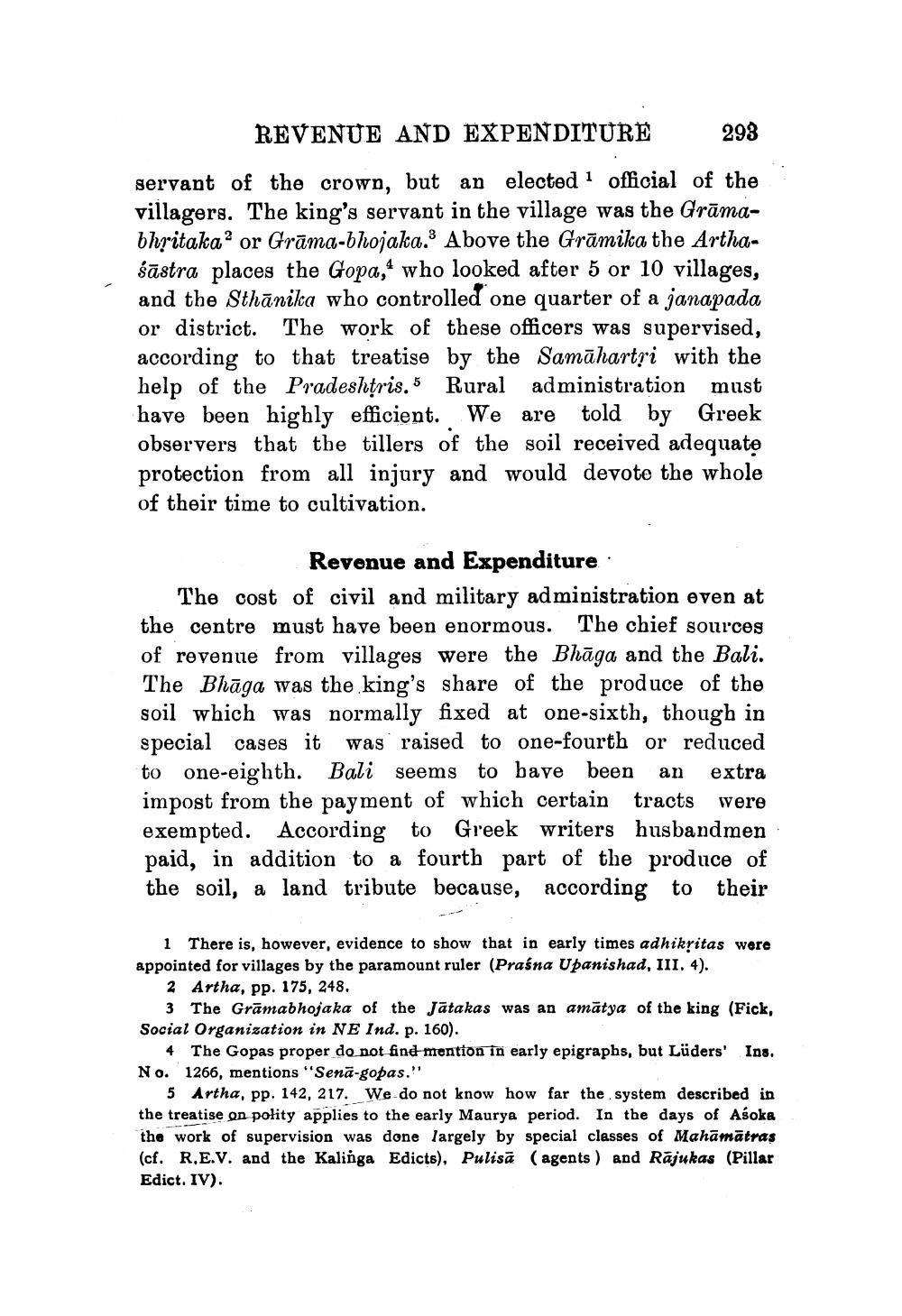________________
REVENUE AND EXPENDITURE
293
servant of the crown, but an elected 1 official of the villagers. The king's servant in the village was the Grāmabhritakaor Grāma-bhojaka.? Above the Grāmika the Arthaśāstra places the Gopa,4 who looked after 5 or 10 villages, and the Sthānika who controlled one quarter of a janapada or district. The work of these officers was supervised, according to that treatise by the Samāhartri with the help of the Pradeshtris. 5 Rural administration must have been highly efficient. We are told by Greek observers that the tillers of the soil received adequate protection from all injury and would devote the whole of their time to cultivation.
Revenue and Expenditure The cost of civil and military administration even at the centre must have been enormous. The chief sources of revenue from villages were the Bhāga and the Bali. The Bhāga was the king's share of the produce of the soil which was normally fixed at one-sixth, though in special cases it was raised to one-fourth or reduced to one-eighth. Bali seems to bave been an extra impost from the payment of which certain tracts were exempted. According to Greek writers husbandmen paid, in addition to a fourth part of the produce of the soil, a land tribute because, according to their
1 There is, however, evidence to show that in early times adhikritas were appointed for villages by the paramount ruler (Praśna Upanishad, III. 4).
2 Artha, pp. 175, 248.
3 The Grāmabhojaka of the Jātakas was an amatya of the king (Fick, Social Organization in NE Ind. p. 160).
4 The Gopas proper do not find mention in early epigraphs, but Lüders' Ins. No. 1266, mentions "Senā-gopas."
5 Artha, pp. 142, 217. We do not know how far the system described in the treatise on polity applies to the early Maurya period. In the days of Asoka the work of supervision was done largely by special classes of Mahāmātras (cf. R.E.V. and the Kalinga Edicts), Pulisā (agents) and Rājukas (Pillar Edict. IV).




